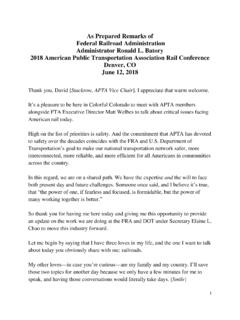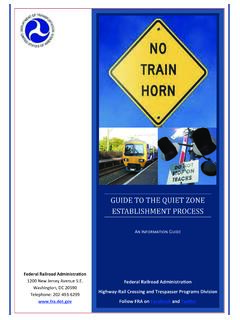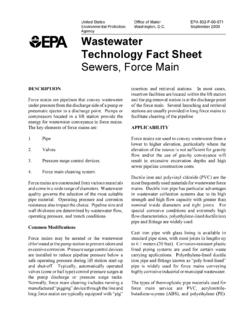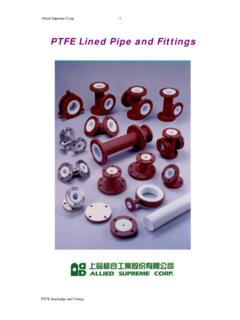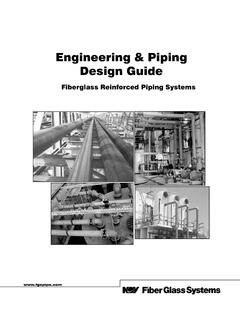Transcription of TANK CAR LOADING, UNLOADING AND TRANSLOADING …
1 TANK CAR LOADING, UNLOADING AND TRANSLOADING REQUIREMENTS Gary Flores Region VII Federal Railroad Administration Definition of Terms Transportation or Transport is the movement of property and the loading, UNLOADING or storage incidental to that movement TRANSLOADING is the transfer of HAZMAT from one packaging (bulk, non bulk) to another packaging (bulk, non bulk) for the purpose of continuing the movement of HAZMAT in commerce Definition of Terms Loading/ UNLOADING Incidental to the movement (For bulk packaging) means the filling or emptying of the bulk packaging with a HAZMAT while in the presence of carrier personnel or when performed by carrier personnel.
2 Both terms include TRANSLOADING . Definition of Terms Storage incidental to the movement includes: - Storage at destination as shown on shipping paper provided the shipping document identifies the shipment as a through shipment and identifies the final destination/s for the HAZMAT; For HAZMAT railcars, Storage on tracks that do not meet the definition of private track or siding even if delivered to destination on the shipping document Definition of Terms Pre-Transportation functions include: the classification of the HAZMAT; selection of the packaging used.
3 Filling, and or securing the closures on the packaging; marking and or labeling the packaging; selecting, providing, or affixing placards for the packaging; preparing, or reviewing a HAZMAT shipping paper; certifying a HAZMAT shipment; provide or maintain emergency response information Applicable References Use of Tank Cars (General Handling) - Examination before shipping (d) - Tank car loading and UNLOADING (g) Tank Car UNLOADING ( TRANSLOADING ) - Same requirements as (g) - Specific handling requirements/ allowances Tank Car handling Similarities (g)(1) -Secure access to the track/s (g)(3) -Apply handbrakes and block wheel/s in both directions (g)(2) -Display of Caution Sign/s (a)(3) -Secure access to the track/s (a)(2)
4 -Apply handbrakes and block wheel/s in both directions (a)(4) -Display of Caution Sign/s (g) Tank car loading and UNLOADING . When placed for loading or UNLOADING and before unsecuring any closure, a tank car must be protected against movement or coupling as follows: (1) Each hazmat employee who is responsible for loading or UNLOADING a tank car must secure access to the track to prevent entry by other rail equipment, including motorized service vehicles. Derails, lined and locked switches, portable bumper blocks, or other equipment that provides an equivalent level of security may be used to satisfy this requirement.
5 (g)(1) (2) Caution signs must be displayed on the track or on the tank cars to warn persons approaching the cars from the open end of the track and must be left up until after all closures are secured and the cars are in proper condition for transportation. (g)(2) (3) At least one wheel on the tank car must be blocked against movement in both directions, and the hand brakes must be set. If multiple tank cars are coupled together, sufficient hand brakes must be set and wheels blocked to prevent movement in both directions. (g)(3) TRANSLOADING Additional Handling Requirements for TRANSLOADING Operations (a)(5) Maintain written safety procedures and make available for HAZMAT employees performing TRANSLOADING operations ( 29 CFR) (a)(6), (b) Relieve of interior pressure and proper removal of manway covers (d) Use of safety precautions to prevent ignition of vapors during UNLOADING Additional Handling Requirements for TRANSLOADING Operations When UNLOADING ( TRANSLOADING ) from the Bottom Outlet Valve (BOV).
6 Manway cover adjustments (f) Operate valve several times to confirm valve is seated before removing BOV cap (g) Precautions when removing BOV cap to prevent/control possible leakage (i) Additional Handling Requirements for TRANSLOADING Operations (i) During the UNLOADING operation (transfer) must have either: - HAZMAT employee present with an unobstructed view of the operation or - Monitoring system observed by HAZMAT employee (capable of immediate notification of emergency or malfunction) TRANSLOADING Operation Allowance (j) Tank Cars with protective housings ( DOT 105, 112) do not require attendance when piping is still attached if.
7 -All valves are tightly closed - piping is capped/plugged and not connected to hoses/ UNLOADING equipment - piping does not extend more than six inches from the protective housing TRANSLOADING Operation Allowance (k) When the unloader is absent, UNLOADING connections may be left attached to the car if: - No transfer of product being performed - HAZMAT employee on site to monitor - If monitoring system used, same as (i) - Tank car/ facility valves are securely closed Examination before shipping (d)(1) No person may offer for transportation unless that person determines that the tank car.
8 As a minimum, each person offering a tank car for transportation : (d)(1)(i) (i) Except where insulation or a thermal protection system precludes an inspection, (d)(1)(ii) (ii), or any other condition that makes the tank car unsafe for transportation; (d)(1)(iii) iii) that make the tank car unsafe for transportation; (d)(1)(iv) (iv) ; (d)(1)(v) (v) for proper securement; (d)(1)(vi) (vi) prior to visual inspection if the tank car contains , as defined in of this subchapter, ; (d)(1)(vii) (vii) to ensure the integrity of the rupture disc; (d)(1)(viii) (viii) for conditions that make the tank car unsafe for transportation.
9 (d)(1)(ix) (ix) ; (d)(1)(x) (x) to ensure that the inspection and test intervals are within the prescribed intervals. (d)(2) (2) , in accordance with this subchapter, to be designed and , including the effects of temperature and vibration, there will be . (d)(2) Continued In any action brought to enforce this section, , detected at any point, will establish a that a by the offeror of the car. That presumption may be rebutted by any that the not within the control of the offeror. Empty packagings. (a) Except as otherwise provided in this section, Spillage on the Car How Much is Too Much?
10 ?? How Much is Too Much??? (b) Each package used for the shipment of hazardous materials under this subchapter shall be designed, constructed, maintained, filled, its contents so limited, and closed, so that under conditions normally incident to transportation (4) There will be hazardous material residue adhering to the outside of the package during transport. (b)(4) A tank car can be OVERLOADED by: Exceeding the maximum gross weight for the journal size, which is the Load Limit (LD LMT) + Light Weight (Tare) or, Exceeding the maximum filling limit or filling density standards in the regulations or, Both methods !
